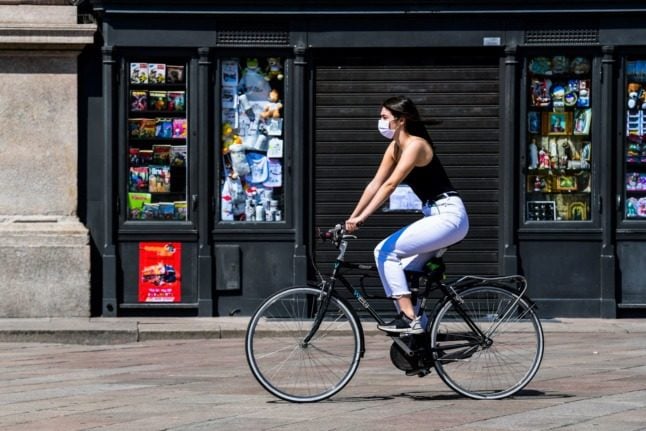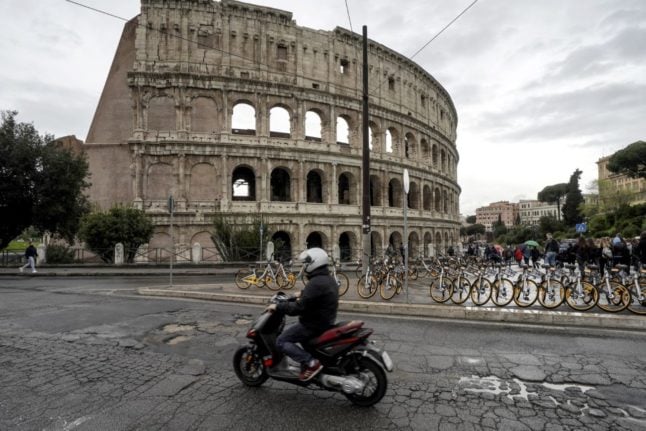As with so many things in Italy, provinces, cities and regions show substantial variation when it comes to quality of life.
Job opportunities, quality of public transport networks, climate, and leisure activity options are some of the key factors usually taken into account by surveys examining the pros and cons of living in different parts of Italy.
But when it comes to the best and worst places to live in Italy, one survey has taken into account factors that may improve the standard of living for female residents.
On Monday, the Italian financial newspaper Il Sole 24 Ore released the 2021 edition of its annual quality of life survey; and for the first time this year, the survey looks specifically at quality of life indicators for women in different parts of the country.
READ ALSO:
- Almost half of Italian women report suffering sexual harassment
- 12 statistics that show the state of gender equality in Italy
- Why are there so few women in Italy’s most powerful jobs?
Metrics include life expectancy at birth, employment rates, the gender wage gap, rates of sexual violence, Olympic medals won by women and their overall performance in sports events, and percentages of female-run businesses and women in management roles across the public and private sectors.
Italy scores poorly in global rankings for equal opportunities at work and in politics, education and health, with high (and rising) rates of female unemployment and a persistently low percentage of women in top management roles.
The picture is not always the same across the country however, as the findings of Il Sole 24 Ore’s survey appear to illustrate.
Topping the list of best towns and cities for woman is the northeastern city of Treviso. It scores highest overall and for female infant life expectancy, and ranks among the top five Italian towns for female youth employment rates.
In second place is Prato in Tuscany, which has the lowest gender wage gap of any province in the country. Nearby Siena, which comes in third overall, is fifth for life expectancy and seventh for the percentage of company directorships held by women.
The top ten positions are predominantly occupied by provinces in the centre-north, with the regional capitals of Florence and Bologna coming in fifth and tenth place respectively.
Bigger cities like Milan and Rome did not make the top ten in this ranking – nor did any part of southern Italy.

Here are the top five towns and cities to live in for women based on specific criteria:
Best female infant life expectancy rates at birth
- Treviso
- Perugia
- Prato
- Cagliari
- Siena
Lowest rates of (reported) sexual violence
- Treviso
- Perugia
- Prato
- Cagliari
- Siena
Highest female employment rates
- Bologna
- Trieste
- Bolzano
- Milan
- Aosta

Highest female youth employment rates
- Bolzano
- Biella
- Ferrara
- Sondrio
- Cuneo
Smallest gender employment gap
- Aosta
- Cagliari
- Trieste
- Milan
- Nuoro
Smallest gender wage gap
- Prato
- Oristano
- Enna
- Rome
- Imperia
READ ALSO:
- The very best Italian towns to move to – according to people who live in them
- ‘Why I used to hate living in Rome as a foreigner – and why I changed my mind’
Highest percentage of women directors in companies
- Savona
- Imperia
- South Sardinia
- Aosta
- Terni
Highest percentage of woman city managers
- Ravenna
- Cagliari
- Prato
- Bologna
- Modena
The bottom thirty spots are all occupied by central-southern towns and regions, with Caltanissetta in Sicily in last place.
Overall, regional capitals tend to perform relatively poorly compared to smaller cities and towns. Turin, Rome and Milan come in 24th, 27th, and 33rd out of 107. Palermo ranks 86th, and Naples comes a dismal 105th place.
Given that the centre-north does best overall, it’s perhaps surprising that it’s northern cities that score the worst in areas like percentages of female-run companies and women directorships.
READ ALSO: Rome and Milan ranked ‘worst’ cities to live in by foreign residents – again
Milan ranks at the very bottom in the first of those two categories, with only 17.2 percent of its companies run by women; while Bolzano comes 106th and Trento 105th. When it comes to the female directorships of companies, these positions are slightly shuffled: Bolzano comes last place, Trento 105th, and Milan 103rd.
The top 50 Italian towns and cities to live in for women overall, according to the 2021 Il Sole 24 Ore survey:
- Treviso
- Prato
- Siena
- Savona
- Firenze
- Varese
- Pisa
- Ferrara
- Aosta
- Bologna
- Macerata
- Perugia
- Ravenna
- Trieste
- Cagliari
- Monza and Brianza
- Udine
- Arezzo
- Livorno
- Modena
- Nuoro
- Forlì-Cesena
- Biella
- Turin
- Lecco
- Ancona
- Rome
- Fermo
- Cremona
- Grosseto
- Verbano-Cusio-Ossola
- Padua
- Milan
- Pordenone
- Cuneo
- Reggio Emilia
- Novara
- Venice
- Lucca
- Pistoia
- Verona
- Terni
- Bolzano
- Vicenza
- Asti
- Trento
- Rieti
- Isernia
- Pavia
- Pesaro and Urbino



 Please whitelist us to continue reading.
Please whitelist us to continue reading.
Member comments